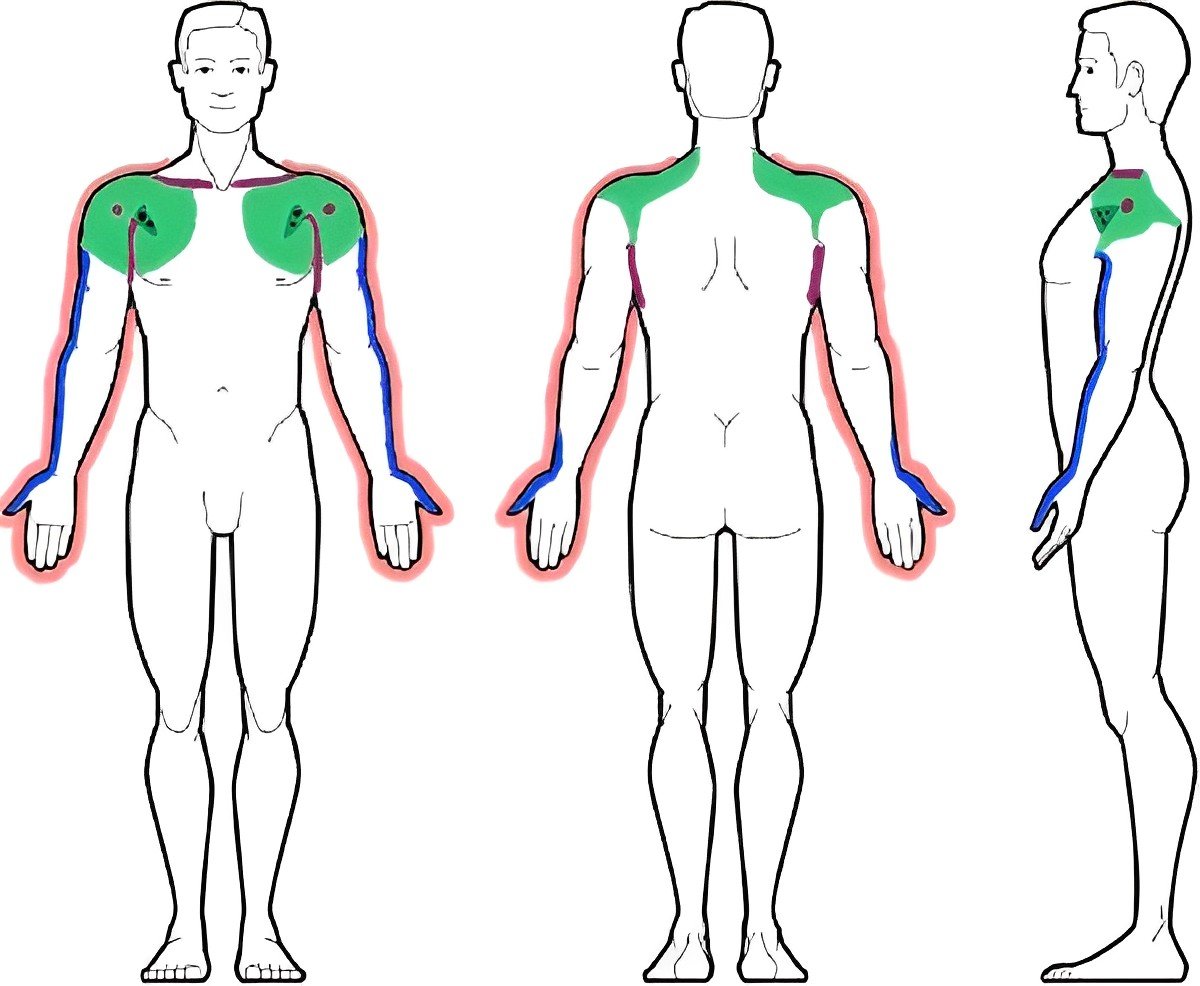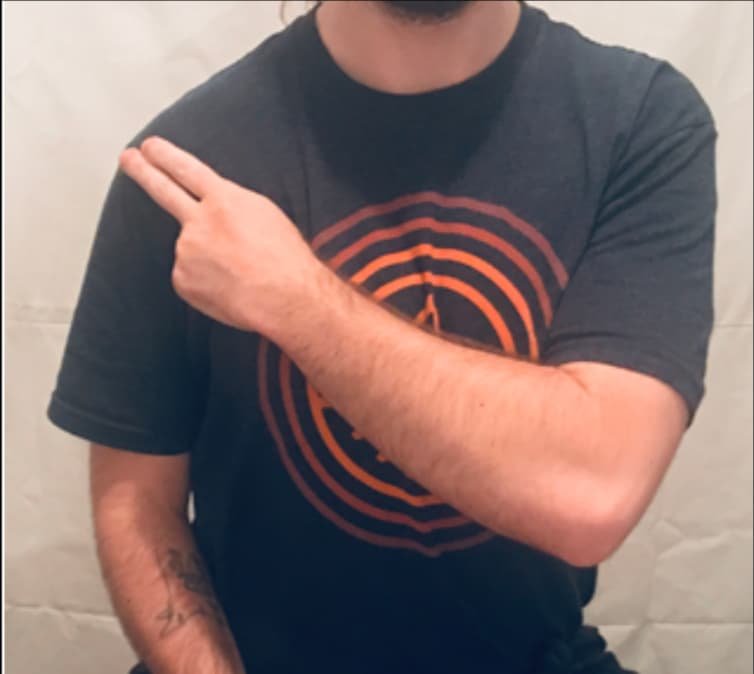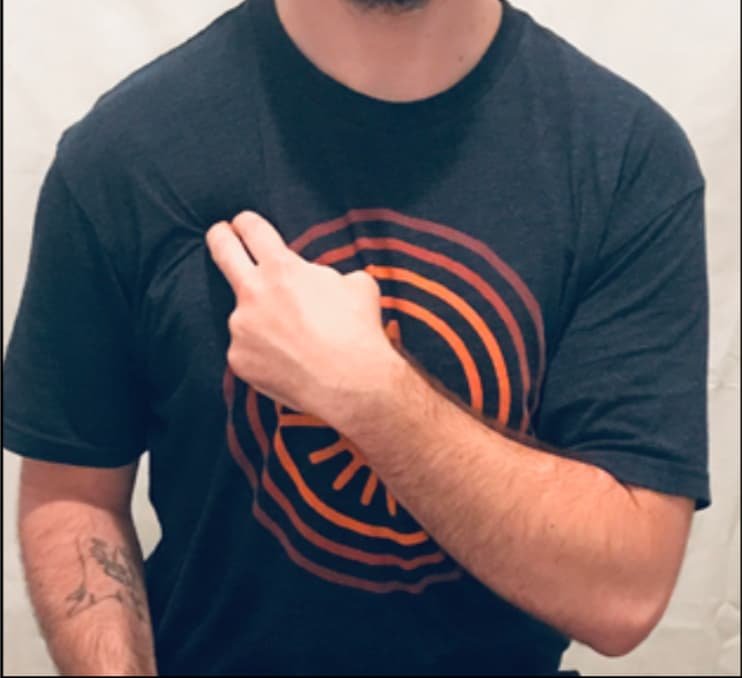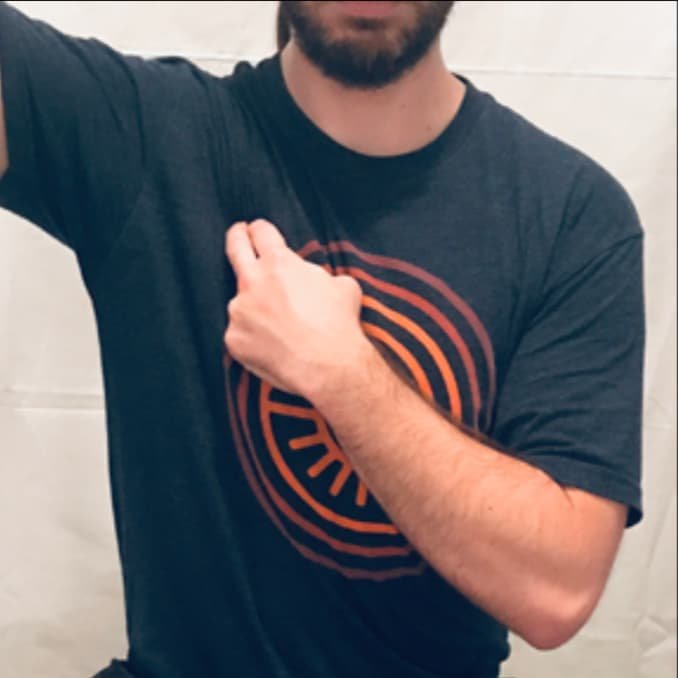Pec Minor
MUSCLE RELIEF
BENEFITS:
Can help open up shoulders as well as various muscular structures down the arm, allows the shoulder blade to slide back and down (helping correct winged scapula), improves inspiration, improves external range in shoulder, can relieve internal shoulder pain, helps improve posture.
This is technique 1 of 4 in the Rotator Cuff Relief Series.
The pec minor can be the “hidden source” to a hoard of complications involving the chest, back, shoulders, and/ or arms. It’s an elusive muscle and generally very tender to work on. Treat this muscle with care, and remember to continue taking care of it with judiciousness.
Test for this mobility’s effectiveness by first assessing your wingspan, shoulder range of motion, general chest broadness, upper body posture (mirror optional), and internal rotation of the arm and/or shoulder (rounded shoulders).
To locate this small muscle: Ball your hand into a fist with your index and middle fingers extended. Place your fist within the top-outside corner of your opposite chest, so your two fingers lay diagonally over your deltoid. Now, slide your fist down diagonally, replacing your two fingers where your balled-up fist was just located. (You should be sliding your hand diagonally down your chest three
to four inches, depending on how big your hand is.) Your two extended fingers now represent your pec minor. This demonstration just gave you the size and location of the pec minor and what direction its muscle fibers run.
Leave your fist where it is and curl your two fingers. With pressure, claw inwards on your chest, pinching the muscle to your rib cage. While still applying force with one hand, lift your arm, reaching overhead for the first release. This type of move in Manual Therapy is called a pin-and-stretch. When your arm reaches full range overhead, you can reset and repeat. (Pick your fingers up, replace the arm back down, push back down with your clawed fingers, and then reach your arm up overhead again.)
You should seek out different pinning points along this muscle. Remember, the muscle is the size and location of your two fingers from the prior demonstration.
Alternatively, you can vice the front of your armpit, where this muscle resides. Pinch both sides with your thumb and index/middle fingers to pin the area down. Then, as before, extend your arm upwards. This movement can be painful. Take it as slow as you need to, and you’ll be fine. Remember to breathe.
After several pass-throughs with any of the variations, recheck the quality of your shoulder and arm movement. Examine any improvement in upper body posture. How do you feel when your arms open when reaching wide in a wingspan? Take notice of your chest-to-shoulder relationship and any improved ease to your upper-chest inspiration. Remember to keep up with this one. It will be well worth it!
Side Note: For more potential releases, reach or stretch your arm in a variety of ways during either of these methods.
QUICK REFERENCE:
1. Place your fist in the corner of your upper chest with your first two fingers covering your shoulder.
2. Side your fist down diagonally, replacing your two fingers where your fist used to be. Your two fingers now represent your pec minor.
3. Curl your two fingers and press inwards.
4. With your working arm, reach over head.
Alternatively: Pinch both sides of your anterior armpit. Actively release the muscle by extending your arm overhead.










